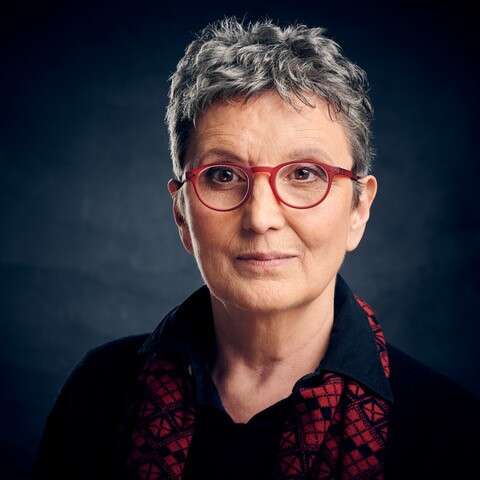On the trail of hearing
16. Apr. 2025 / Science & Research
Listening has multiple meanings. For me, listening has been a professional tool for decades - both as a musician and music therapist and as a professor who teaches, researches and is constantly learning. Listening conveys vibrations from the outside to the inside via language, music and sounds and provides information about vibrational relationships in the world and in our interactions.
I am writing this article from an existential situation. Due to the cancer that has accompanied me with repeated metastases, I have been on a rollercoaster between hopeless and promising for many years. Even if death itself seems banal, everything changes with the acute personal threat. The inside, the outside and the in-between are redefined for me. When I listen to myself, there are spaces between life and death and heaven and earth. In the face of these ongoing trials of finiteness, various in-between spaces occur within me.
Where do I focus my attention? What sounds like to me? In which ear am I deaf? Which voices are particularly appealing to me right now?
Hearing is influenced by expectations, tastes, imprints, decisions, ideas and much more. Hearing is a relationship. Hearing is the basis for communication and understanding. Everything we hear contains more than what we first heard.
When something becomes important to me, I become quieter and quieter and increasingly listen inwards, while the outside remains in my widening field of vision.
New Year's Eve: I am sitting in Berlin Cathedral with countless strangers. We have all gathered here to celebrate the transition from the old to the new year in a dignified manner under a nightly “organ firework display”. There seems to be a kind of silent agreement that this evening will have lasting resonances. When the last note has faded away, it remains quiet for an unusually long time before a never-ending frenetic applause “develops.”
After intense listening experiences, I have the impression that from one second to the next, everything is completely different than before.
Listening to music as music therapy
Listen to the subtle, incessant sound. It is the silence. Listen to what you hear when you no longer hear anything (Paul Valéry).
Perception training with music and the regulative music therapy developed by Christoph Schwabe are music therapy methods in which listening plays the decisive role.
The music is and remains unspecific in its meaning and therefore does not work like a drug. Participants are therefore always invited to linger in perceptive attention while listening to music, similar to mindfulness meditation. Both inner processes, such as thoughts, feelings, memories, body perceptions and images, as well as what is heard on the outside, such as music, ambient sounds, silence and more, require attention. The desired direction of development is: “From not wanting to be aware to accepting awareness.” In this way, physical and mental tensions are regulated, as a result of which new confidence is experienced in the sense of rediscovered and/or further developed expectations of self-efficacy.
From the dizzying pendulum swings between life and death, I work my way back into a lively swinging and flowing equilibrium by listening, especially with regulative music therapy.
Prof. Dr. sc. mus. Petra Jürgens
Founder and, until March 2025, head of the “Music Therapy” degree program and head of the Institute for Music Therapy at Friedensau Adventist University
With this article, Prof. Petra Jürgens gives an insight into the questions that are presented to students in the music therapy courses as a small stimulus. The article was heavily abridged for “Unser Friedensau”. Original in the magazine Musik und Gesundsein (2024), No. 45.

Image rights: Friedensau Adventist University | private